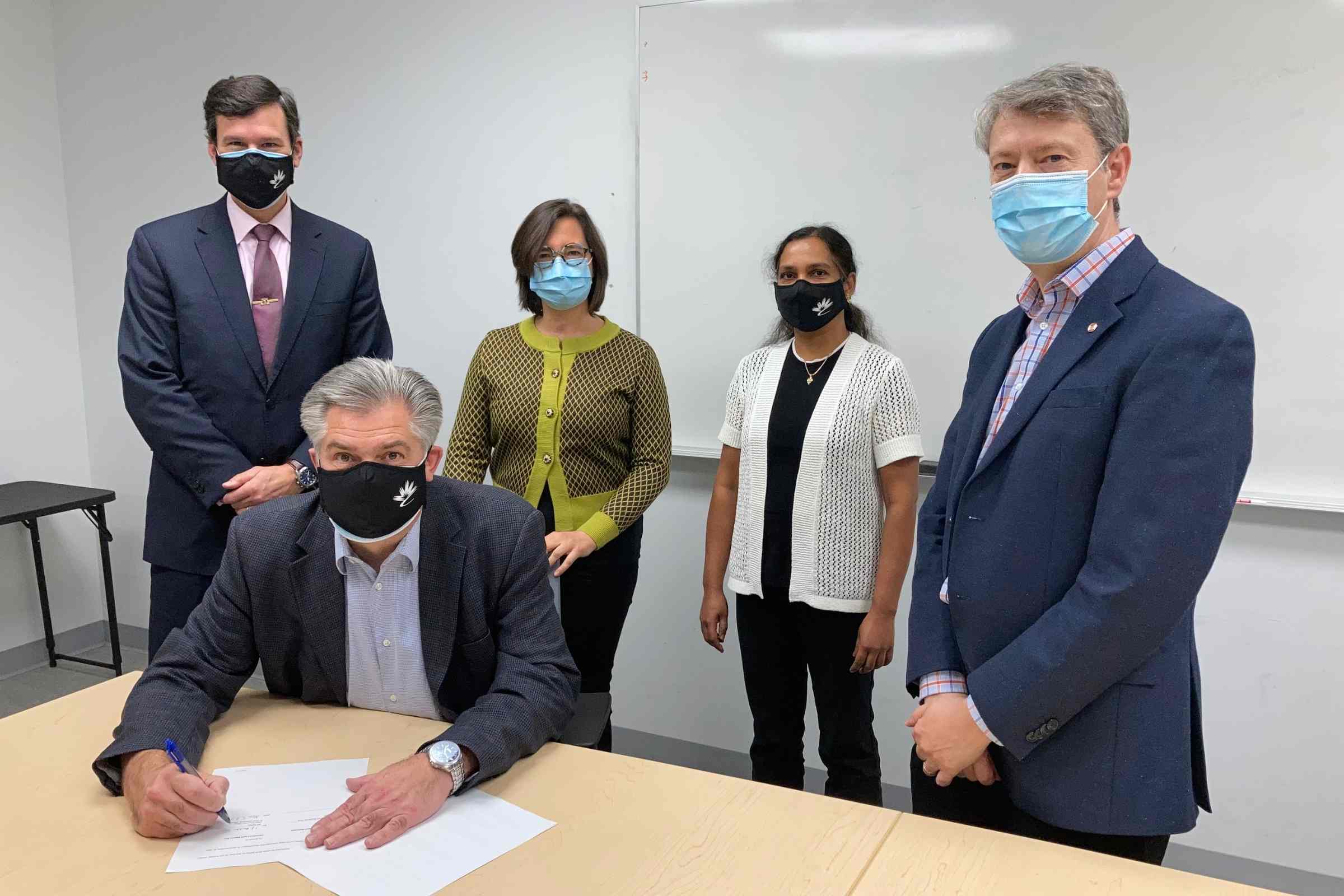
Canadian and Brazilian synchrotrons sign MOU to advance agricultural research
New agreement will strengthen ties, enhance agricultural research, and encourage new technology development.
By Sandra Ribeiro
The Canadian Light Source (CLS) at the University of Saskatchewan and the Brazilian Center for Research in Energy and Materials (CNPEM) have signed a Memorandum of Understanding (MOU) for technical and scientific collaboration in synchrotron and accelerator science.
“We look forward to this new collaboration with our colleagues in Brazil,” said Bill Matiko, Chief Operating Officer of the CLS. “Their world-leading expertise in the development of next-generation light sources will contribute enormously to our long-term planning. Together we will advance agricultural innovation in both our countries by expanding the applications of synchrotron technology in agricultural research– from soil and plants to foods and animals.”
The Brazilian Synchrotron Light Laboratory is part of the CNPEM, a private non-profit organization under the supervision of the Brazilian Ministry of Science, Technology, and Innovations. The center operates four national laboratories and is the home of the most complex project in Brazilian science – Sirius – one of the most advanced synchrotron light sources in the world.
The MOU will focus on two specific areas of collaboration. First, a new program - the Maple Project - will create a rapid-access mail-in agriculture program for Sirius users to access CLS’s VLS-PGM beamline. Additionally, scientists from both institutions will work together to grow the applications of synchrotron science in the field of agriculture through workshops, presentations on proposal development, and collaborative research projects.
Second, this agreement will enhance accelerator and machine development. The organizations will share best practices in maintenance, design and testing state-of-the-art technologies and equipment as well as designing and building next-generation facilities.
“Studies in agriculture are essential to respond to the challenges that the future holds, and the use of synchrotron light as a research tool offers great potential in the search for scientific answers in this area,” highlights José Roque, director-general of CNPEM. “The partnership between CNPEM and CLS will be able to foster research in agriculture, as both institutions have extensive experience in cutting-edge research with synchrotron light and may benefit from joint research and information exchange.”
The MOU will be in effect for 5 years.
About CLS
The Canadian Light Source at the University of Saskatchewan is a national research facility, producing the brightest light in Canada—millions of times brighter than even the sun. One of the largest science projects in our country’s history, the CLS hosts annually more than 1,000 scientists from around the world who use our light to conduct ground-breaking health, agricultural, environmental and advanced materials research.
The Canada Foundation for Innovation, Natural Sciences and Engineering Research Council, National Research Council of Canada, Canadian Institutes of Health Research, the Government of Saskatchewan and the University of Saskatchewan fund our operations.
About CNPEM
A sophisticated and effervescent research and development environment, unique in Brazil and present in few scientific centers in the world, the Brazilian Center for Research in Energy and Materials (CNPEM) is a private non-profit organization under the supervision of the Brazilian Ministry of Science, Technology, and Innovations (MCTI). The Center operates four National Laboratories and is the cradle of the most complex project in Brazilian science – Sirius – one of the most advanced synchrotron light sources in the world. CNPEM brings together highly specialized multi-thematic teams, globally competitive laboratory infrastructures open to the scientific community, strategic lines of research, innovative projects in partnership with the productive sector, and training for researchers and students. The Center is an environment driven by the search for solutions with an impact in Agriculture, Health, Energy, Environment, New materials, among others.
The unique and complementary skills present at CNPEM encourage Research and Development (R&D) in areas of synchrotron light; accelerator engineering; drug-discovery, including from plant species of Brazilian biodiversity; molecular mechanisms involved in the onset and progression of cancer, heart disease, and neurodevelopment; functionalized nanoparticles to fight bacteria, viruses, cancer; new nanostructured sensors and devices for the oil and gas, health and agricultural and environmental sectors; biotechnological solutions for the sustainable development of advanced biofuels, biochemicals, and biomaterials; and molecular and microscale mechanisms of water and nutrient movement in soils.
Photos: CLS | Signing the MOU
To arrange an interview, contact:
Victoria Schramm
Communications Coordinator
Canadian Light Source
306-657-3516
victoria.schramm@lightsource.ca
